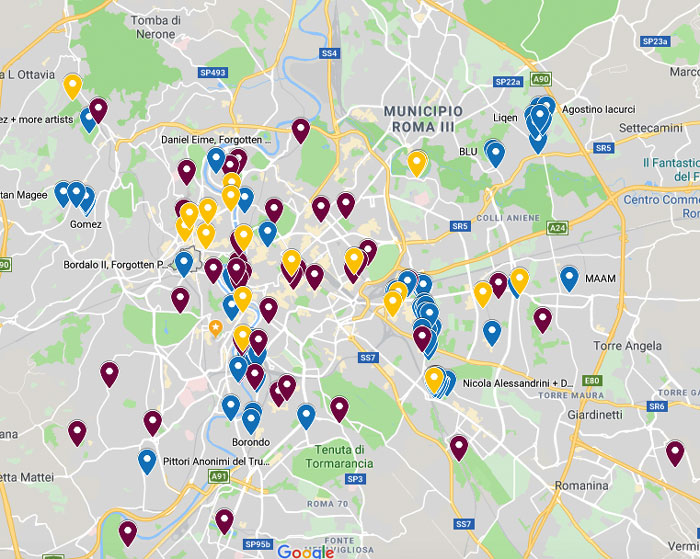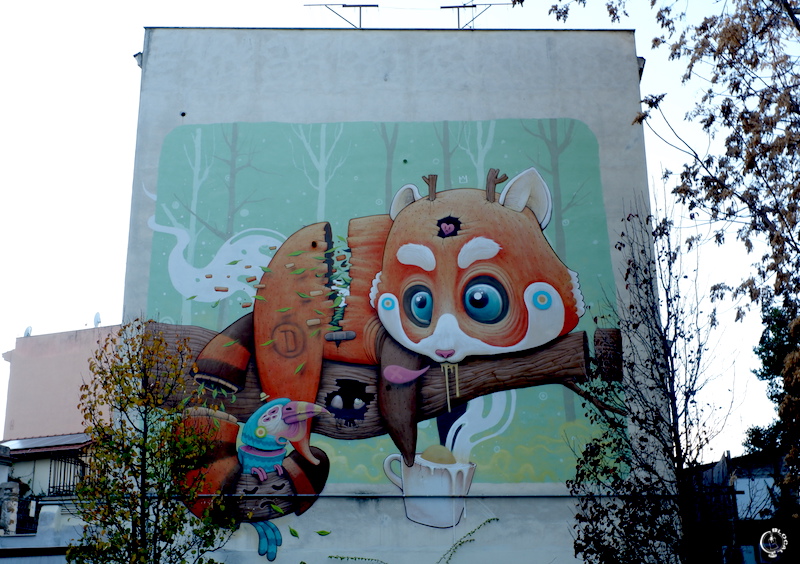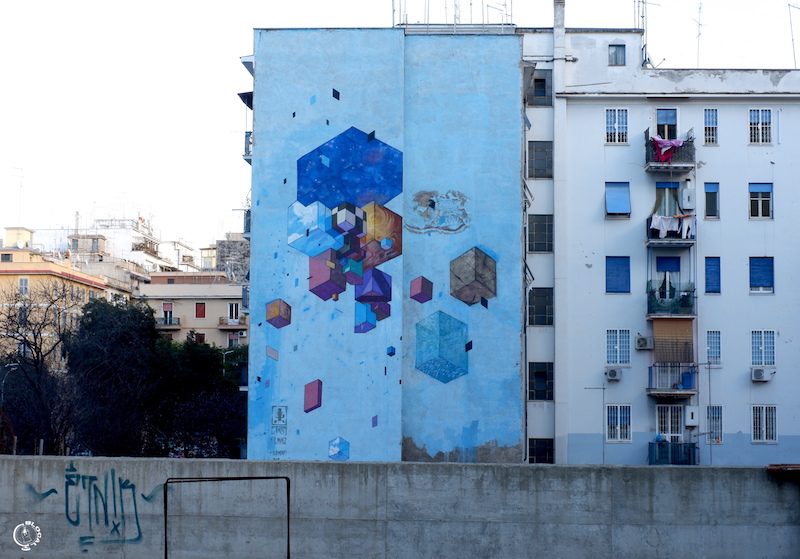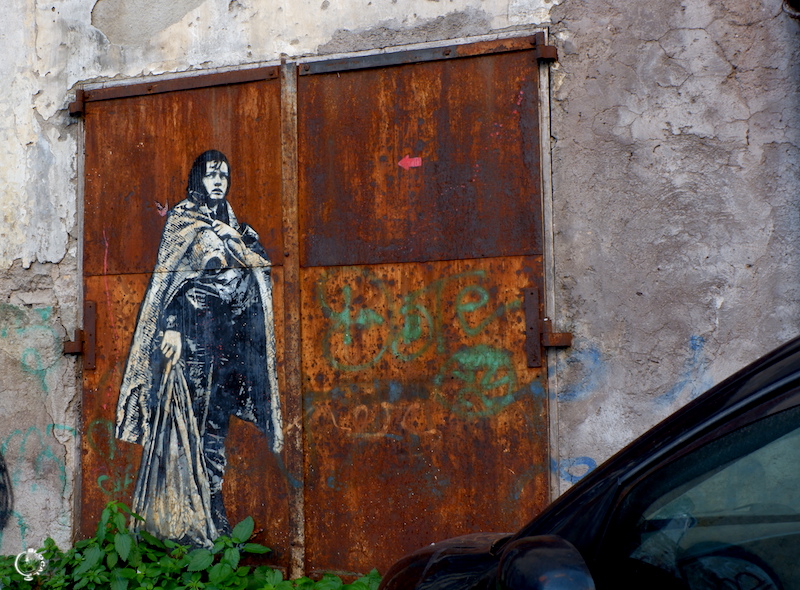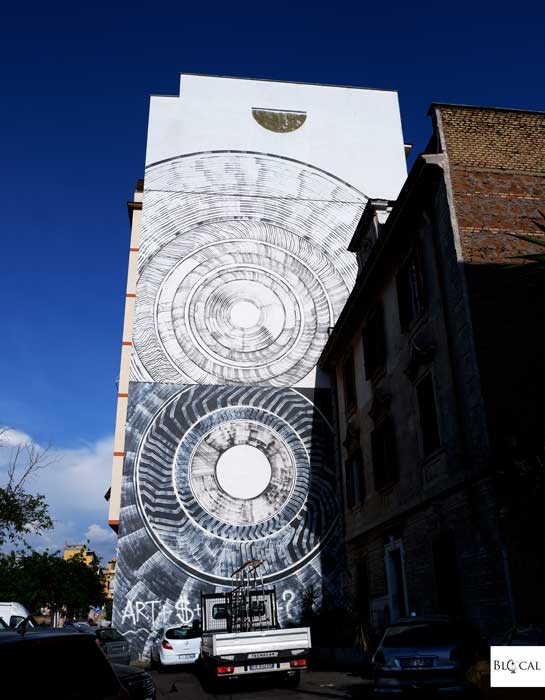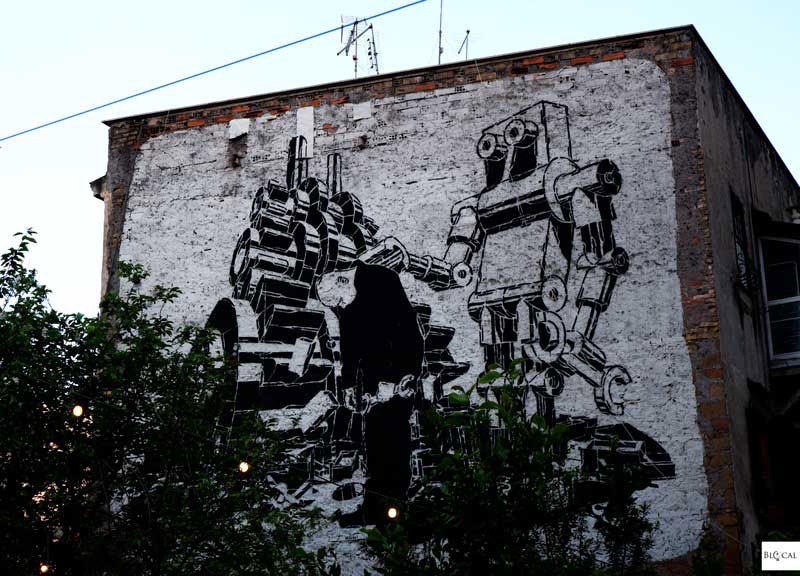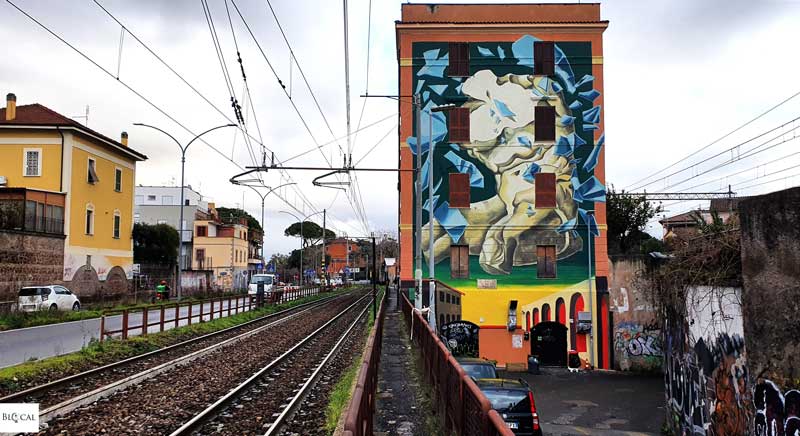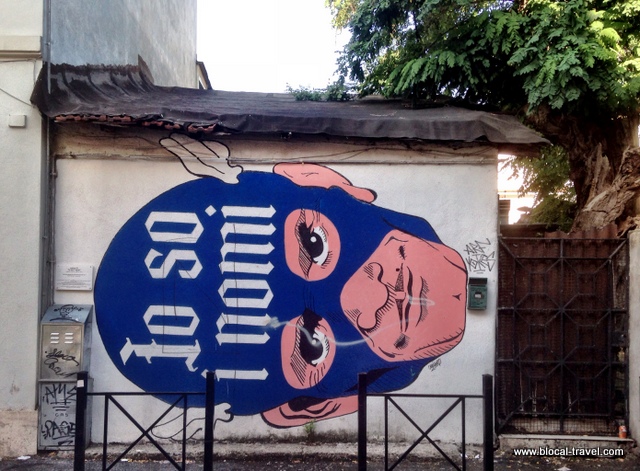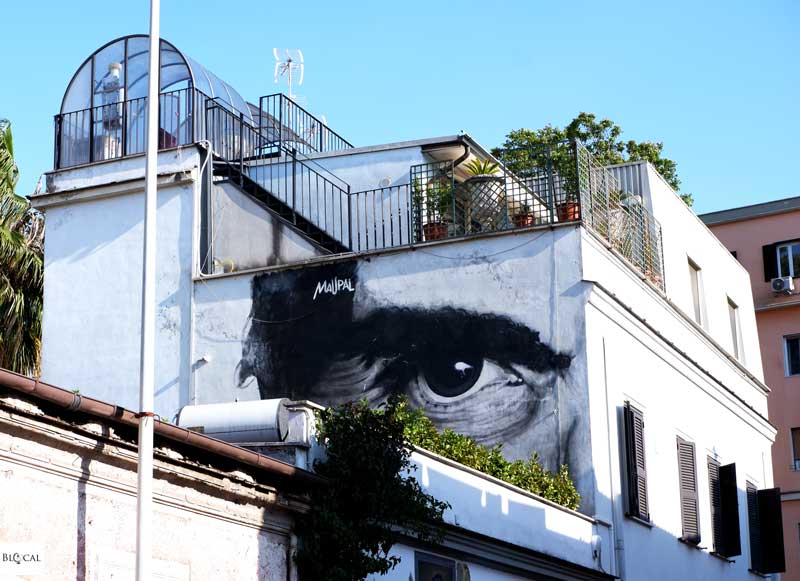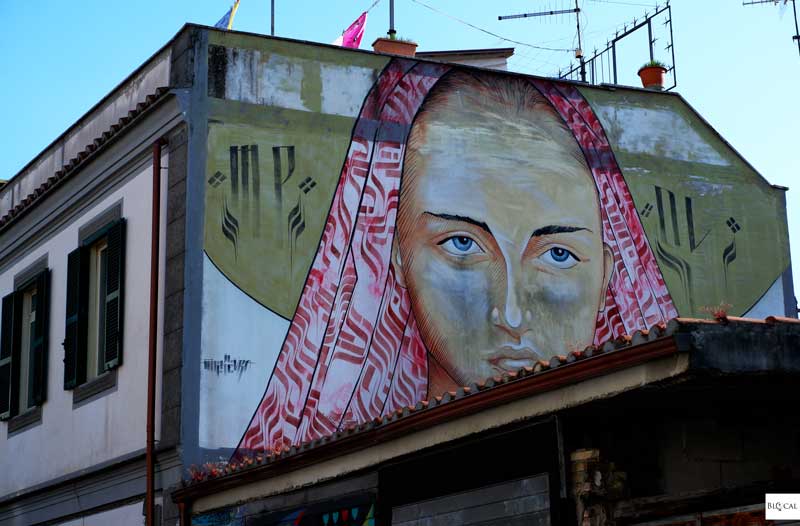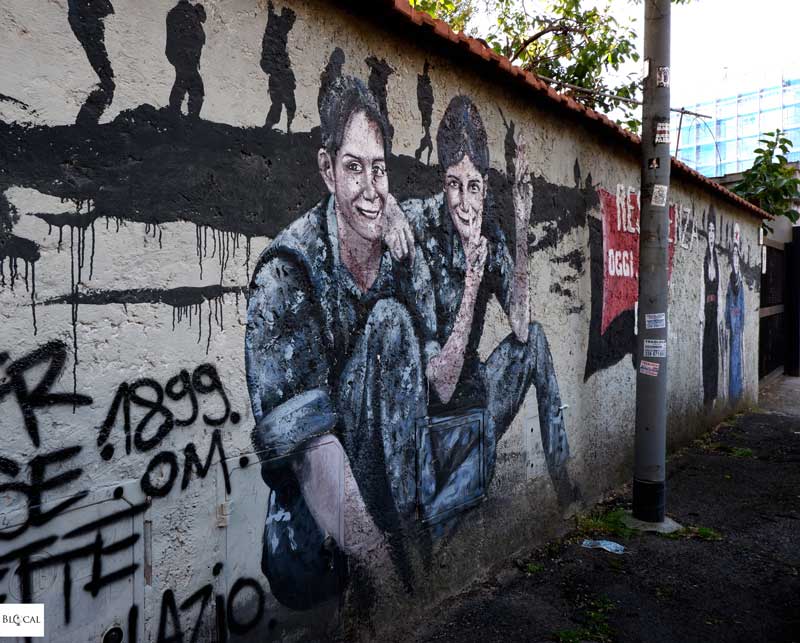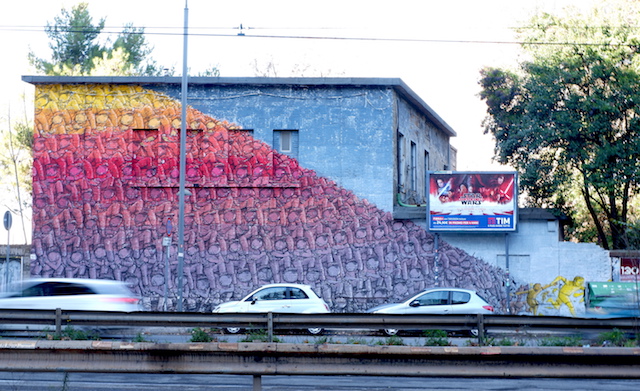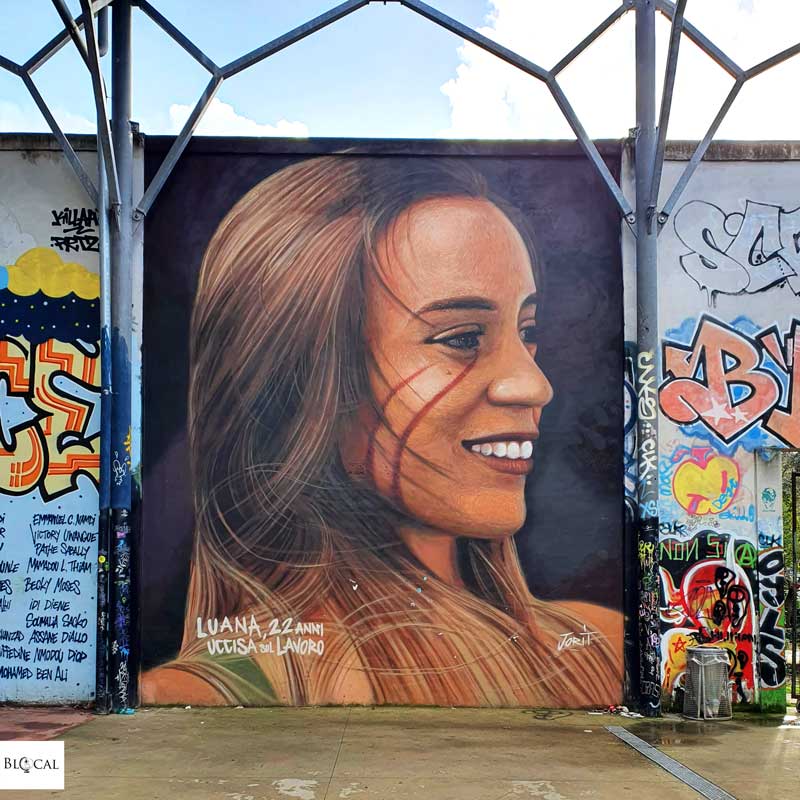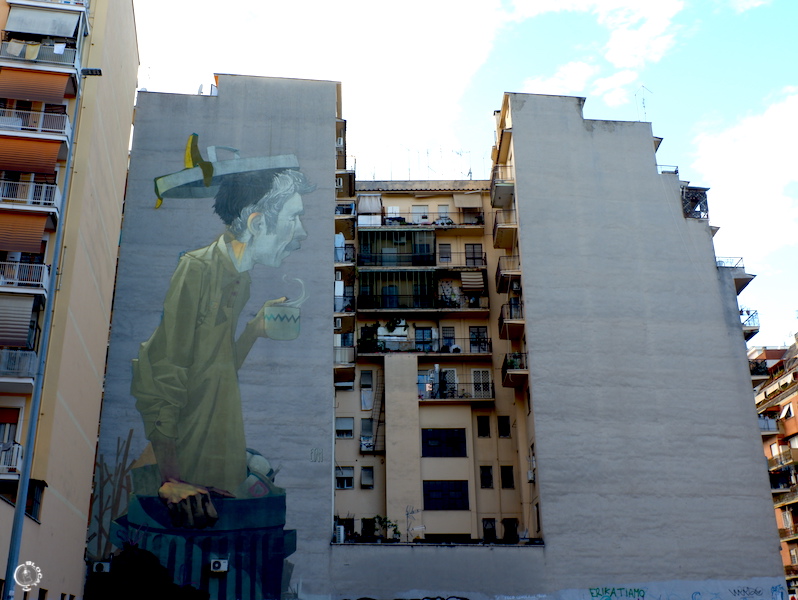Modelled on the concept of a garden city with low-rise buildings and quiet streets, Pigneto is a neighbourhood that has a strong sense of community identity. Pigneto may be squeezed between two of Rome’s busiest consular roads (Via Prenestina and Via Casilina), but its heart is a pedestrian zone: famous by day for its local market and the charm of its bars with their unmistakable retro style, famous by night for its aperitifs, ethnic food and nightlife.
Considering also the proximity to La Sapienza University, these traits have attracted many students to the area, as well as a great many artists. Various street artists from Rome have their studios in Pigneto, making it one of the main neighbourhoods for street art in the city.
- Read also: “Street Art in Rome: A Guide to Ephemeral Art in Italy’s Eternal City” the ultimate travel guide to the top 26 neighborhoods to find street art in Rome, with handpicked local tips to eat, drink and shop in Rome like a local.
Rome Street Art Map:
Do you want a personalised travel itinerary based on your interests and passions?
Then check out my concierge service ;)
Where to find the best street art in Rome? Exploring Pigneto neighbourhood
Among these artists is ALICE PASQUINI, whose poetic images in pastel tones are painted in many of the narrow and bumpy streets, which are typical of this neighbourhood. In addition to these small scale works that capture moments of everyday life, Alice Pasquini has also put her signature to a mural in Via Fanfulla da Lodi, which ranks right up with the most beloved murals in Pigneto. Inspired by a photo that Gianni Berengo took in Paris when, in Italy, it was still prohibited kiss in public, this mural depicts two lovers on a bench.
Two other beautiful street art pieces in Pigneto were commissioned by the art gallery Varsi on the occasion of two equally beautiful exhibitions held in 2015 that centred around the Spanish artist DULK and the Italian artist ETNIK. The works are situated opposite on another in the Via Antonio Tempesta. Etnik painted one of his gravity-defying geometric compositions suspended in space, while DULK has rendered one of his surreal and dreamlike animals.
In this corner of Pigneto, the famous French street artist Jef AÉROSOL created a few black and white stencils which capture, like snapshots, the continuous flow of the inhabitants of the metropolis. Active on the streets since the 1980s, Jef Aérosol is known for his images that excite all kinds of audiences. The stencil of the child, for example, manages to speak to the kids of the neighbourhood as well as the parents and the elderly who are reminded of their childhood.
Another noteworthy street art work in Pigneto is the abstract facade in Via Fortebraccio painted by 2501. ‘Intersection’ is a free yet geometrically rigorous composition created by the Milanese artist to represent the act of painting itself. It’s an aesthetic reflection which eternalises on the wall the context of the wall itself. This context is made up of both the shadows that run across the building during an enitre solar cycle, and of the time it took to complete the work.
If, at this point, you would like to plunge into Pigneto’s nightlife – loved by Romans from every quarter – then check out the courtyard of restaurant Rosti where you will find a mural by the well-known Polish stencil artist M-CITY. The work depicts a robot and a fatigued factory worker next to a constellation of cogs and gears that stand symbolise industrialised society.
Update 2022:
Last addition to the streets of Rome’s Pigneto neighborhood is this massive mural by Luca Zamoc, right above the legendary club 30 Formiche. Inspired by the art of Italian painter Giorgio De Chirico, “Il suono del tempo” (sound of time) sets the ancient statue of Belvedere Torso between the eastern Rome railway and the Roman aqueduct of Via del Mandrione.
Street Art in Pigneto: Murals that pay homage to Pier Paolo Pasolini
From an urbanistic point of view, Pigneto came into being from 1870 onwards when pre-existing residential settlements built without permit merged. The charm of these small hamlets with their narrow streets and low houses has made Pigneto an evocative setting for many films, first and foremost Roma Città Aperta (‘Rome, Open City’) by Roberto Rossellini (1945) and L’Accattone (‘Beggar’) by Pier Paolo Pasolini (1961).
Pasolini himself is one of the central figures in the history of Pigneto, and many street art works in the area are dedicated to him. The best known are located along Via Fanfulla da Lodi, where Pasolini shot many scenes of L’Accattone and where he loved to spend his evenings sitting at the tables of the historic Bar Necci. These three murals – created on the occasion of the 40th anniversary of the artist’s death – represent three different faces of Pasolini: the journalist, the poet and the film director.
In the mural by OMINO71, Pasolini the journalist takes on the role of a superhero who bravely fights against the political system. The title of the work (‘Io so i nomi’, ‘I know the names’) comes from the opening words of a famous article on terrorism written by Pasolini in 1974.
[Update 2022: The mural by Omino71 is no longer there]
For the mural ‘L’occhio di Pasolini’ (‘The eye of Pasolini’), the Roman artist MAUPAL was inspired by a famous poem by Pasolini on the idea of beauty and the importance of having eyes that continue to look, convinced of the belief that beauty can never cease to exist.
The third mural created in honour of Pasolini in Pigneto was painted by MR KLEVRA, a street artist from Rome with an unmistakable Byzantine influence. His ‘Little Mary’, in fact, was painted according to the canons of 13th century religious art, but with the addition of realistic details. The image – a close-up shot of the actress Margherita Caruso – is taken from Pasolini’s film Il Vangelo secondo Matteo (‘The Gospel According to St. Matthew’, 1964).
Read also: Street Art tributes to Pier Paolo Pasolini in Rome
Street Art in Pigneto: Murals addressing politics and society’s ills
From an historical point of view, Pigneto is known for having been a very active neighbourhood in the period of Antifascism and for having preserved its strong political character to this day. Militants of the Roman resistance used to live in the low houses of the neighbourhood. Today, these antifascists are commemorated not only by plaques bearing the names of those who were deported in 1944, but also by one of the main political street art works in the neighbourhood: the mural by ALADIN in Via Giovanni Brancaleone entitled ‘Resistance: Yesterday, Today and Tomorrow’. The Yemeni-born artist has painted a triptych linking the 70th anniversary of the liberation from the Nazis to contemporary social struggles, such as of the protesters of the NO-TAV movement, which protests against high speed railway lines that ruin nature.
Read also: The Top 15 murals of Political Street Art in Rome
In Pigneto we also find one of the most beautiful works by BLU in Rome; it is painted at the entrance of the former industrial site SNIA Viscosa, which has become a community centre covered on the inside with graffiti and street art. The BLU mural represents a colourful mass of exploited and subjugated workers, a fate from which only two figures depicted in yellow manage to free themselves.
Inside the ex-snia, there is yet another political mural by Italian photorealist street artist Jorit, who depicted Luana D’Orazio, a young woman dead at work in 2021, in a factory in Prato.
Read also: Interview with Italian street artist Jorit
Lastly, one of the largest murals in Rome, painted by the Polish duo ETAM CRU in Via Lodovico Pavoni, also deals with social issues. At 32 metres high, the work depicts a homeless man drinking coffee as he comes out of a rubbish bin: a symbol of the ills that define the contemporary metropolis such as consumerism and a shortage of housing.
Rome Street Art Map
Find these (and many more!) murals in my Rome Street Art Map. Download it for free!
